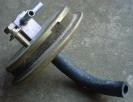

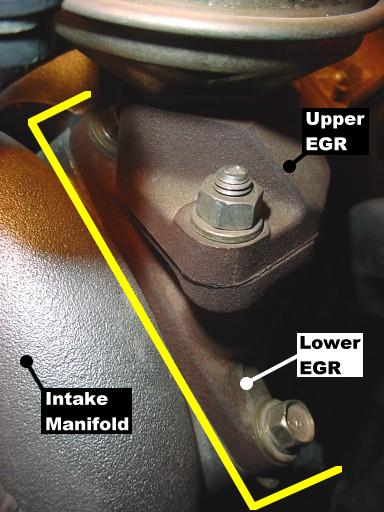
The exhaust gas recirculation (E.G.R.) valve is one of many emissions pieces under the hood of most "high port" '91-'93 SE-Rs. Its purpose is to allow exhaust gas to be fed back into the intake manifold - sending a small amount of "dirty" air back into the engine during combustion is supposed to decrease the amount of harmful emissions coming out of the tailpipe. How much? I'm no expert, but I suspect the EGR system exists to satisfy a fed more than to make any noticeable difference in the air we breathe. To us enthusiasts, that means more engine bay clutter brought on by the government.
I don't advocate ripping out all the emissions devices in your car (some things really do have a positive effect on air quality), but the EGR is a piece that we can gladly get rid of. When it malfunctions or gets clogged up, it can cause our cars to have a rough idle or run poorly at lower RPMs. When I put a vacuum cap over the inlet of my car's EGR, it improved some low-end hesitations problems I was having, something the usual suspects didn't fix (new distributor cap and rotor, cleaned throttle body).
To find the EGR control valve, look towards the firewall side of the engine, where there are two bronze-gold colored "mushrooms." The one on the left is the EGR, and the other is the BPT valve, which aids the operation of the EGR. Here are pictures of the EGR system on highport USDM SR20DE cars:
NISsport sells an EGR blockoff kit for SR20DE cars, which includes blockoff plates for the intake manifold and throttle body, plug for the exhaust manifold/headers, and all gaskets.
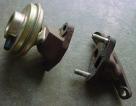
EGR Assembly |
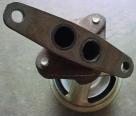
Assembly bottom view |
 Shot of gasket on bottom of EGR top section |
 Top section removed |
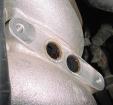 Holes in manifold |
 Manifold holes |
The BPT valve, in line with the EGR valve. The tube on the bottom is an exhaust stream, and the top two nubs deal with vacuum control.
